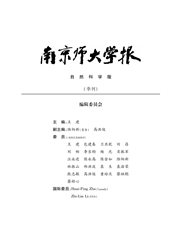

 中文摘要:
中文摘要:
为了研究在考虑免疫接种情况下有限的医疗资源对疾病传播的影响,我们建立了一个带有特殊恢复率的SIVS传染病模型,研究了模型的基本动力学性质并对后向分支进行了详细的证明.结果表明,有限的医疗资源会导致重要的动力学性质,比如双稳现象等.后向分支意味着,即使基本再生数小于1模型依然可能会有稳定的地方病平衡点,基本再生数不能完全反映疾病流行与否.此时,人们应该注意疾病爆发时的初始状态.研究结果同时表明,充足的医疗资源和服务对于疾病的消除与控制非常重要.另外,文章也分析了免疫接种的影响.
 英文摘要:
英文摘要:
In this paper,we formulate a SIVS epidemic model with special recovery rate to study the impact of limited medical resource on the transmission dynamics of diseases with vaccination. The basic investigation of the model has been finished. The backward bifurcation has been proved precisely. It is shown that limited medical resource leads to vital dynamics,such as bistability. Backward bifurcation implies that even if the basic reproduction number is smaller than unity,there may be a stable endemic equilibrium and the basic reproductive number itself is not enough to describe whether a disease will prevail or not and we should pay more attention to the initial conditions. It is also shown that suffi-cient medical services and medicines are very important for the disease control and eradication. Besides,the impact of vaccination has been explored too.
 同期刊论文项目
同期刊论文项目
 同项目期刊论文
同项目期刊论文
 期刊信息
期刊信息
